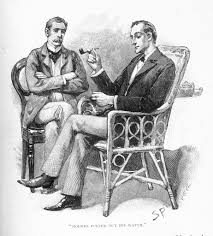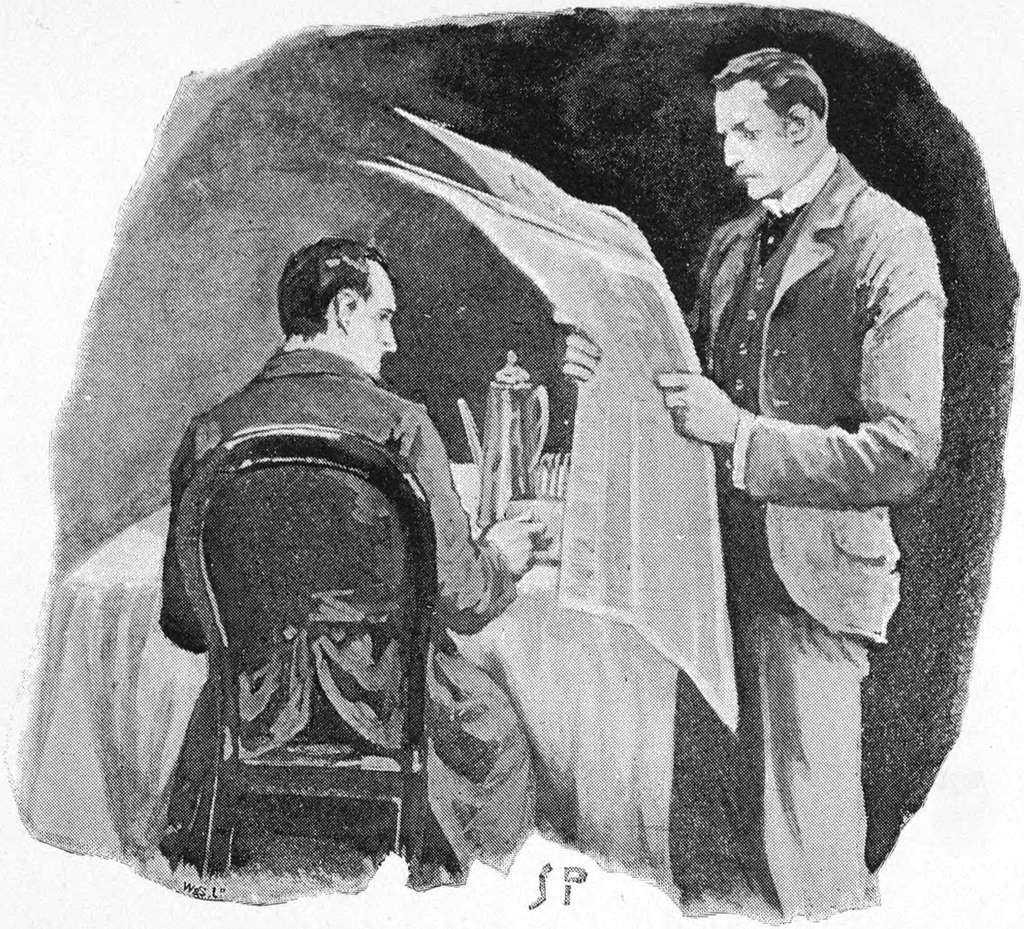
The Evolution of Problem Solving
"As a rule," said Holmes, "the more bizarre a thing is the less mysterious it proves to be." "What are you going to do, then?" I asked. "To smoke," he answered. "It is quite a three pipe problem, and I beg that you won't speak to me for fifty minutes."
The world has changed dramatically since the first edition of Three Pipe Problems was published. The challenges we face have grown more complex, more interconnected, and more urgent. Yet the fundamental truth remains: the world is full of problems that can be solved by anyone through thoughtful, intentional design and systematic problem-solving.
In the years since the first edition, much has changed, but something fundamental holds true: design still solves problems. What began as a book primarily focused on design has expanded into a broader exploration of how we — individuals of varying age, industry, skillset, etc — can create meaningful impact in the world around us. The tools at our disposal have multiplied, the scope of our potential impact has expanded, and the urgency of the problems we face has continued to grow.
The Evolution of Problem-Solving
When I wrote the first edition, I emphasized that "at its core, design is about solving problems." This remains true, but our understanding of what constitutes design and problem-solving has matured. We've seen how the principles of design thinking have spread far beyond traditional design fields, influencing everything from business strategy to social innovation. The designer's mindset — founded in empathy, iteration, and human-centeredness — has become an essential tool for anyone seeking to create meaningful change.
My original statement should really read something like, “at its core, solving problems is about design.” And the best problem solvers are designers at heart. Before you protest and tell me, “but Jason, I’m not a designer…” don’t worry. We’re all problem solvers, created and empowered with the desire (and the responsibility) to serve others and make an impact in the world around us. Which means, learning how to be a designer (embracing design thinking) helps us tackle the problem-solving responsibilities we all have.
Consider how our world has transformed, and is literally transforming daily. The screens that Wilson Miner spoke about in the first edition have become a staple of life, shaping not just how we interact with technology but how we live, work, and interact with each other. The digital transformation, now fueled by AI and digital accessibility, has accelerated beyond what many of us imagined possible. Yet amid this technological revolution, the fundamental truth remains: problems exist, people matter, therefore we should constantly seek to solve problems for people.
The industrial designer Henry Dreyfuss, whom we discussed in the first edition, insisted on understanding the engineering and technical aspects of products before designing them. Today, this principle extends far beyond physical products. Whether we're designing digital experiences, organizational systems, or social interventions, we must deeply understand both the technical underpinnings and the human implications of our work.
The New Complexity
The problems we face today are what systems thinkers call "wicked problems"—challenges that are complex, interconnected, and resistant to simple solutions. Human trafficking, social and economic inequality, health crises, homelessness, addiction, depression, and age-related challenges are just a few examples. These challenges require us to think differently about problem-solving, and more importantly, recognize the responsibility and impact each of us can have.
The light switch example from the first edition — William J. Newton's simple solution to the problem of controlling electrical lighting — seems quaint in comparison to today's challenges. Yet it holds an important lesson: even complex problems can be broken down into simple components. The key is understanding how these components interact and influence each other.
This new complexity demands a more sophisticated approach to problem-solving. It's no longer enough to be skilled in just one domain. Today's problem solvers must be able to:
- Navigate complex systems and understand their interconnections
- Build and lead diverse teams with complementary skills
- Create solutions that scale while remaining human-centered
- Balance immediate needs with long-term impact
- Maintain resilience and adaptability in the face of constant change
The Power of Small Changes
Despite this increased complexity, one of the core messages from the first edition remains more relevant than ever: "The enemy of making a difference is trying to make too big of one." Beth Clark's wisdom about being "satisfied with small changes" continues to ring true. It comes down to being able to recognize and act on “the next right thing.”
Consider the story of DeafSpace from the first edition. What began as a series of small architectural modifications to better serve the deaf community has evolved into a broader movement influencing inclusive design across all spaces — including digital spaces. This illustrates how thoughtful, focused solutions to specific problems can create ripple effects far beyond their original scope.
This philosophy — starting small but thinking systematically — becomes even more powerful in today's interconnected world. Small changes, when strategically designed and implemented, can cascade through systems to create significant impact. I believe the key is recognizing that each of us can and should seek the small changes — the “next right thing” that you and I can do to move our “world” (regardless of size) in a redemptive direction.
The New Problem Solver
The evolution of problem-solving demands a new kind of problem solver. This book is written for those who recognize that first, they are part of this problem-solving charge, and second, that solving today's challenges requires a combination of:
Mindset
- Recognition that they matter and others matter
- Responsibility to do the “next right thing”
- Resilience in the face of complexity
- Critical thinking balanced with creativity
- Urgency coupled with patience
- Empathy as a fundamental skill
Toolkit
- Technical literacy across multiple domains
- Business and economic understanding
- Design thinking and systems thinking
- Research and analytical capabilities
Leadership
- Ability to build and guide diverse teams
- Strategic thinking and execution skills
- Influence and change management expertise
- Long-term vision with short-term action
The Structure of This Book
This edition is organized around five key parts that reflect the evolution of problem-solving:
- The Calling: Understanding why skilled problem solvers are more crucial than ever and identifying problems worth solving.
- The Mindset: Developing the mental frameworks and resilience needed for effective problem-solving in complex environments.
- The Toolkit: Building the cross-disciplinary skills and understanding required for modern problem-solving.
- The Leadership: Learning to lead people, influence organizations, and create lasting change.
- The Path Forward: Creating sustainable impact and building legacy through thoughtful, systematic problem-solving.
A Personal Evolution
When I wrote the first edition, I was primarily focused on how designers could create better solutions through understanding users and their needs. While this remains essential, my own journey has shown me that effective problem-solving requires much more.
I've witnessed how the most successful solutions come from individuals united together, combining diverse perspectives and skills. I've seen how technical expertise must be balanced with human understanding, how business viability must align with social impact, and how immediate actions must serve long-term goals.
This evolution is reflected in the expanded scope of this edition. While design thinking remains a crucial foundation, we now explore a broader range of tools, approaches, and perspectives needed for effective problem-solving in today's world.
The Continuing Journey
As Sherlock Holmes knew, some problems require time, reflection, and systematic thinking — they are "three pipe problems." In today's fast-paced world, it's tempting to rush to quick solutions. And that bias for action is needed — too many remain on the sidelines gripped by fear and apathy. But for those willing to get in the game, the most significant challenges we face require us to slow down, think deeply, and approach problems with both rigor and creativity.
This book is a guide for that journey. It builds on the foundations laid in the first edition while expanding our understanding of what's possible and what's needed. It recognizes that while the world has grown more complex, the fundamental principles of effective problem-solving remain:
- Start with empathy and understanding
- Think systematically about problems and solutions
- Build on the work of others while creating new possibilities
- Focus on creating real impact for real people
- Maintain a long-term perspective while taking immediate action
A Call to Action
The world needs problem solvers more than ever. Whether you're a designer, tradesman, business leader, or change maker in any field, your ability to solve problems will create meaningful impact if you act.
As we begin this exploration together, I invite you to approach these ideas with both ambition and humility. The challenges we face are significant, but as the first edition reminded us, "If you want to change the world, start small. Design small."
Hopefully, this book can be your guide in developing the mindset, tools, and leadership capabilities needed to solve today's problems and create lasting positive change. The journey of problem-solving is ongoing, but with the right approach, we can create solutions that make a real difference in people's lives.
Remember, as we concluded in the first edition: it doesn't matter if you reach twenty people or twenty million. What matters is that you reach the first one, solve the first problem, and take the first step toward creating meaningful change.
Welcome to the journey of modern problem-solving. The game is afoot,




